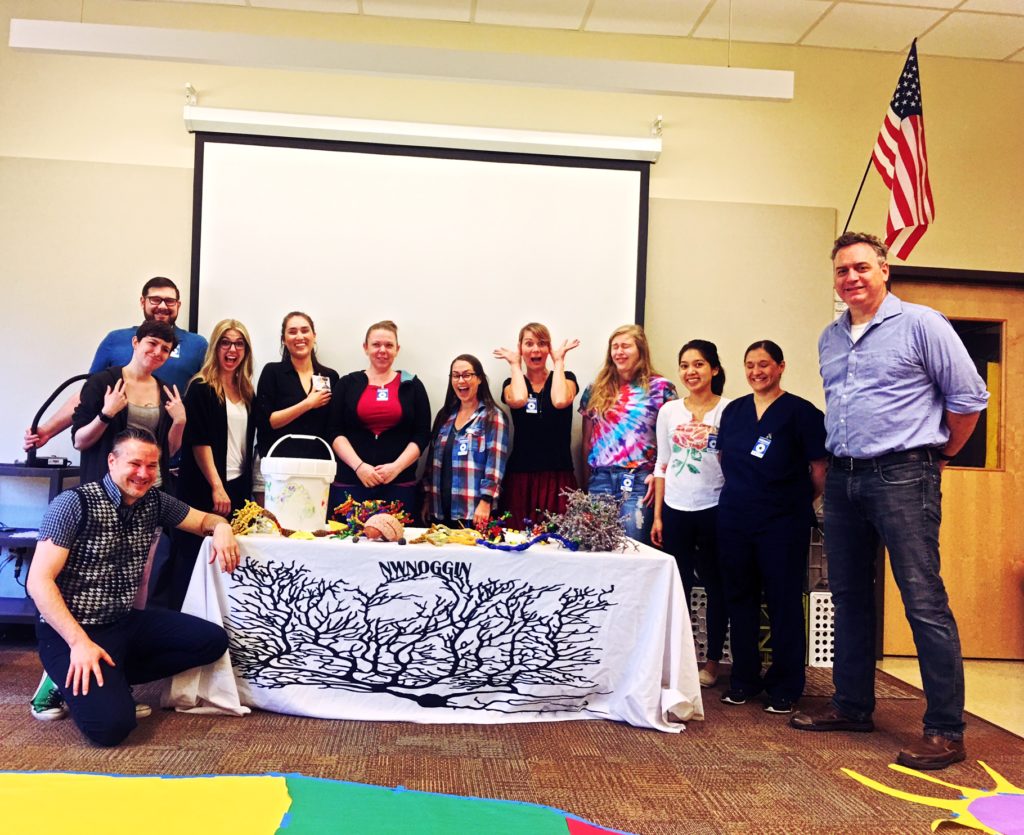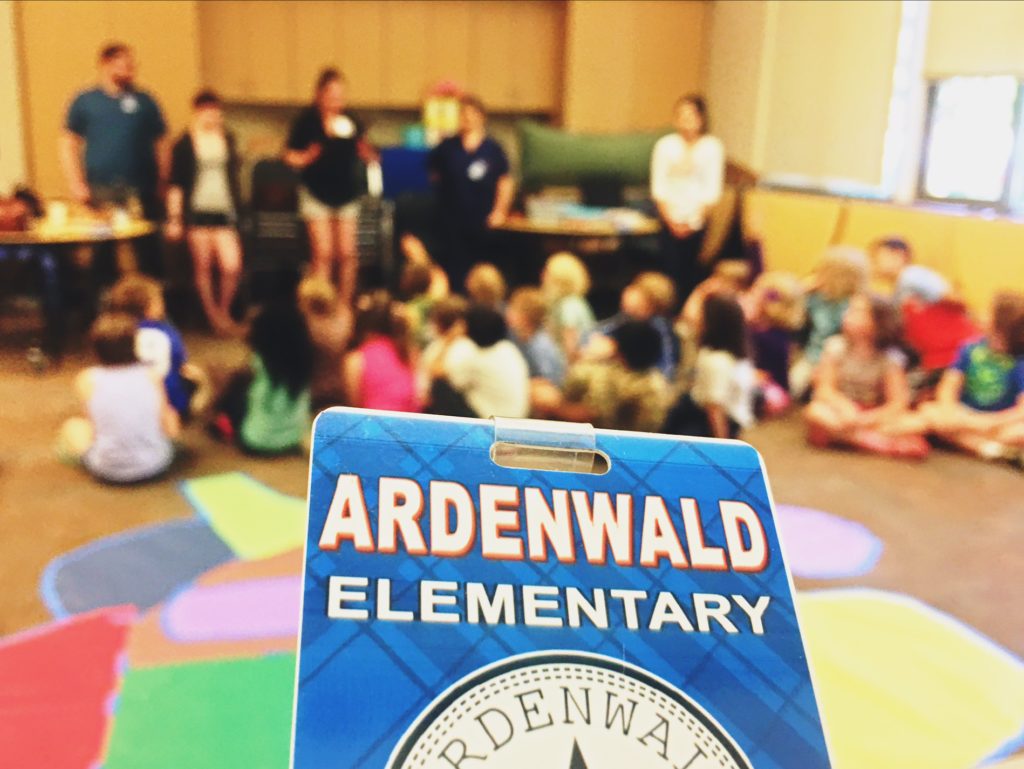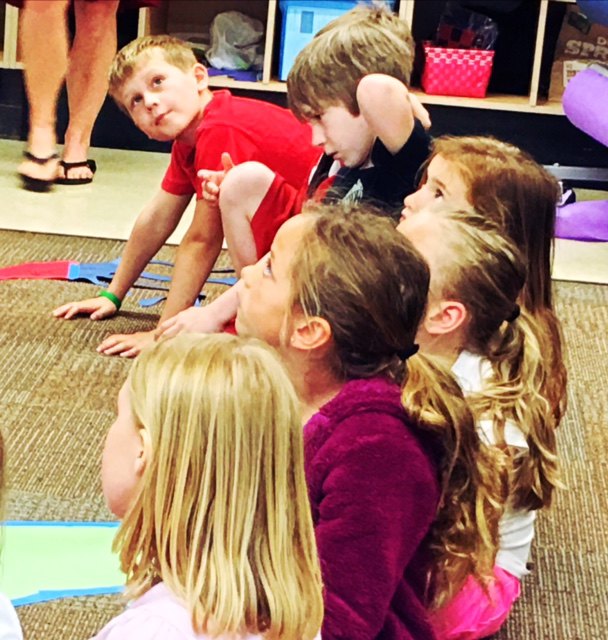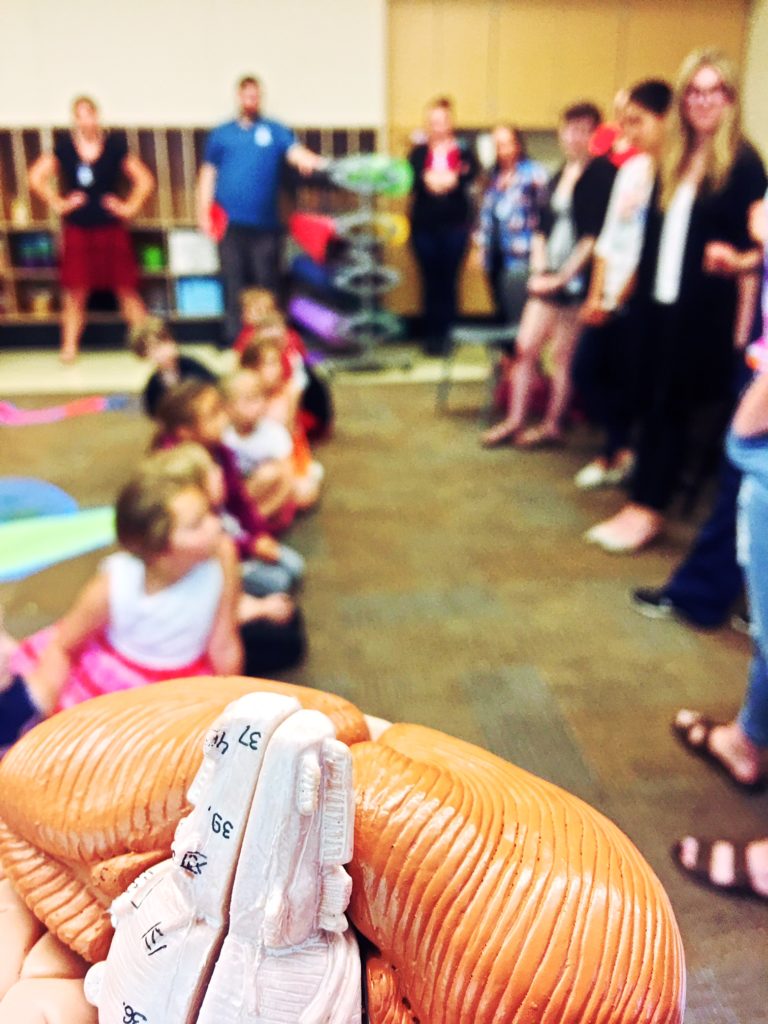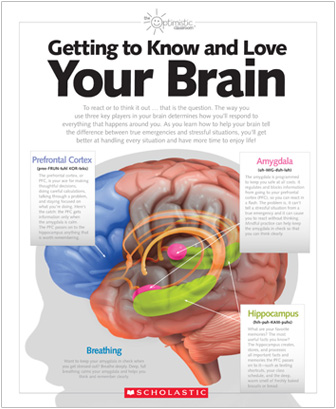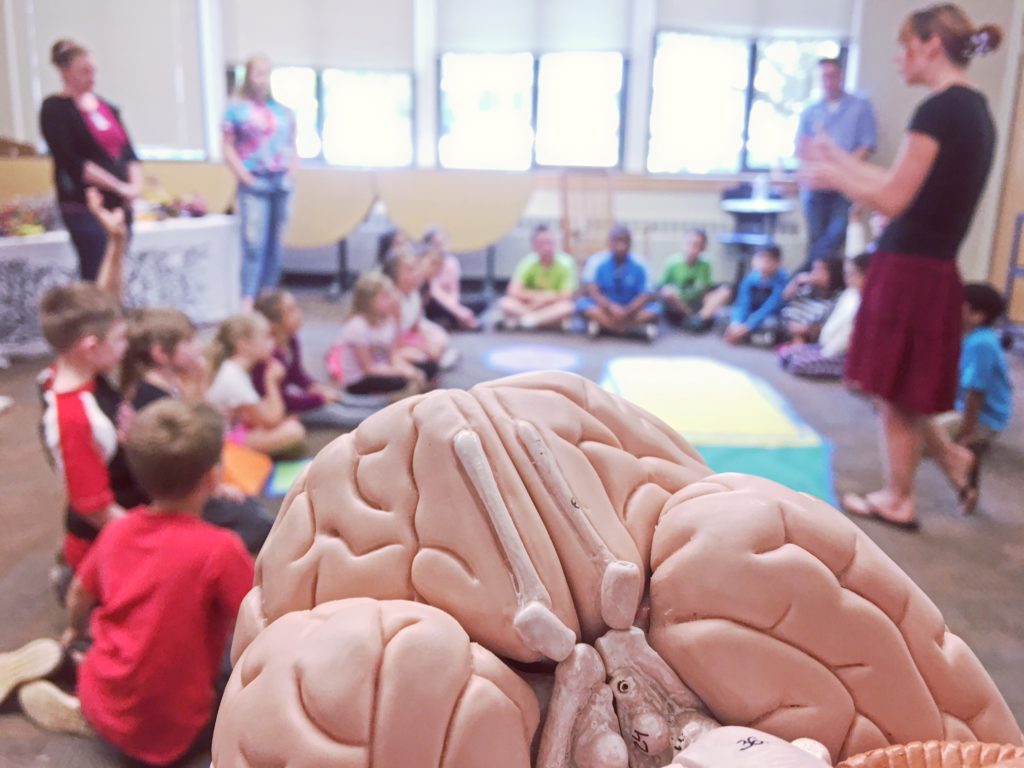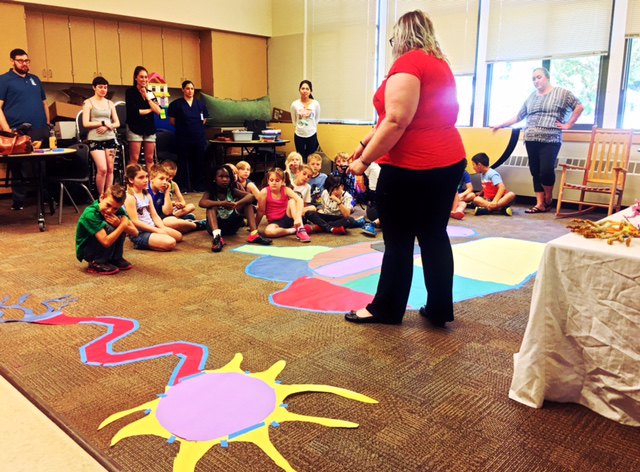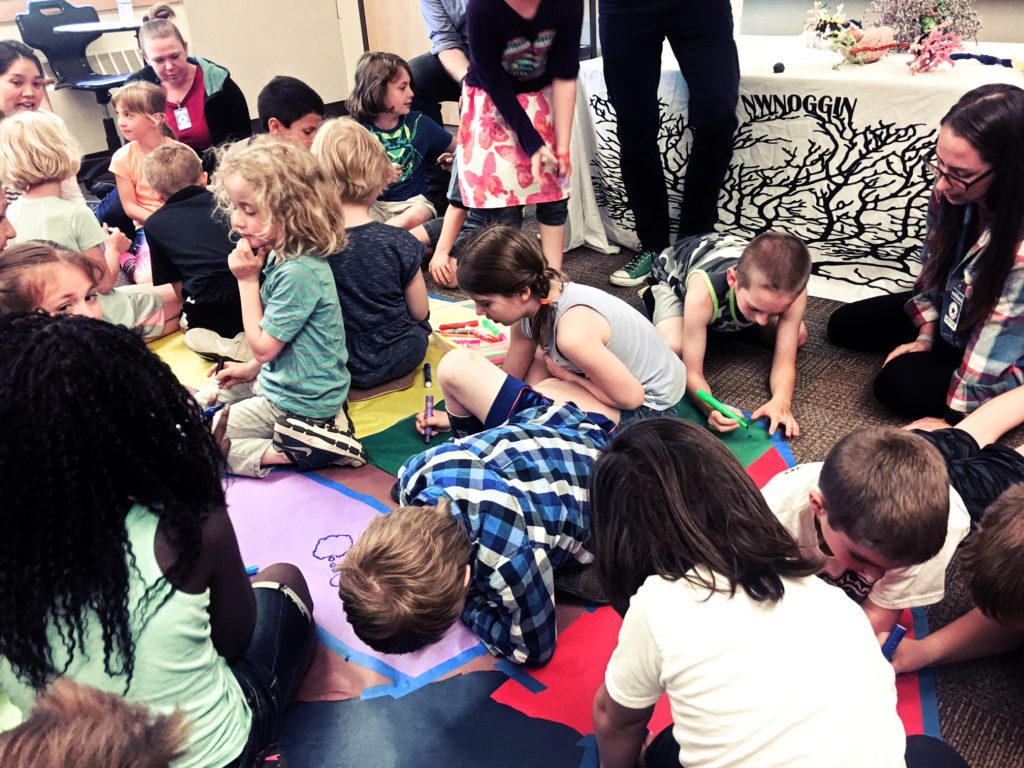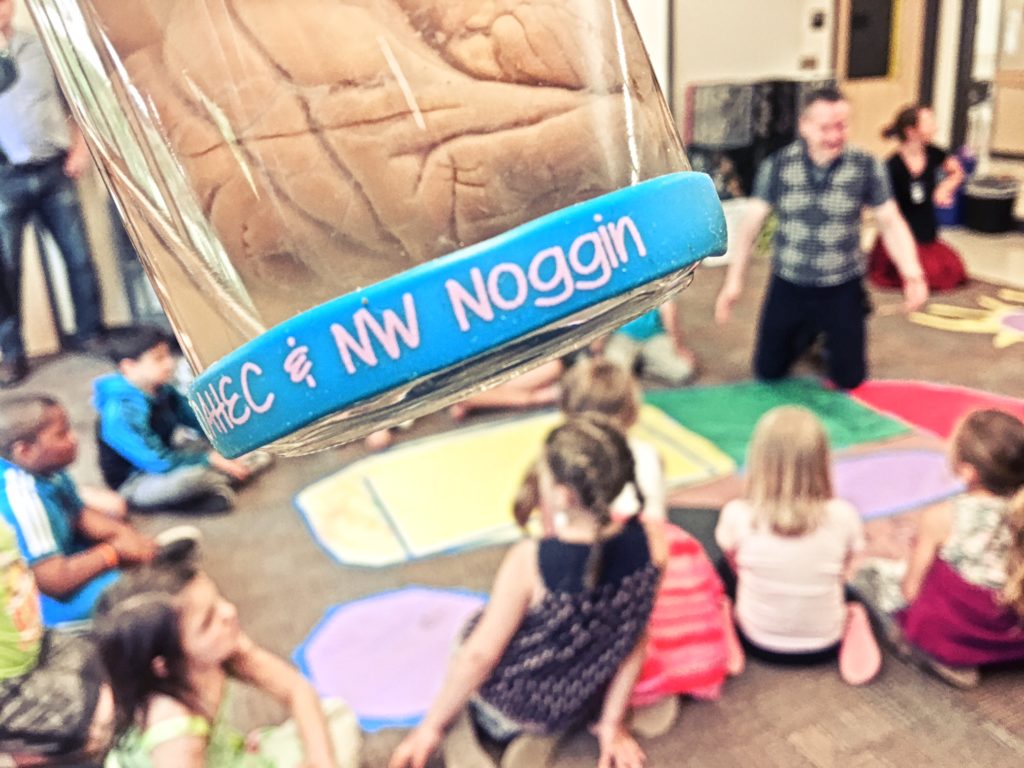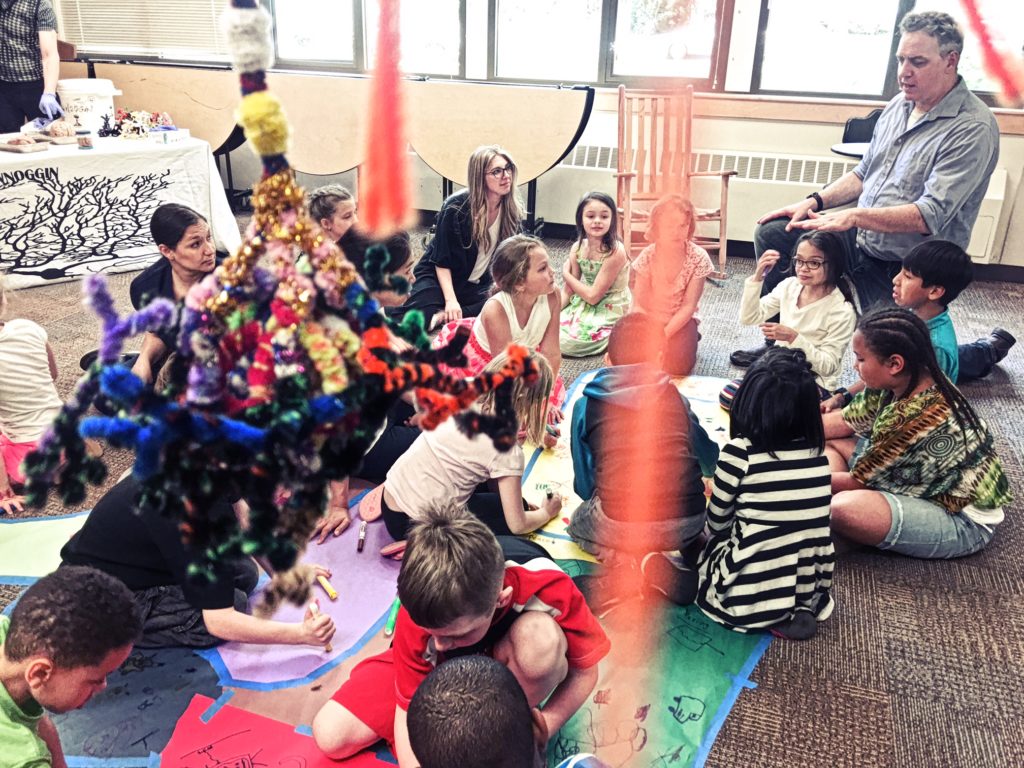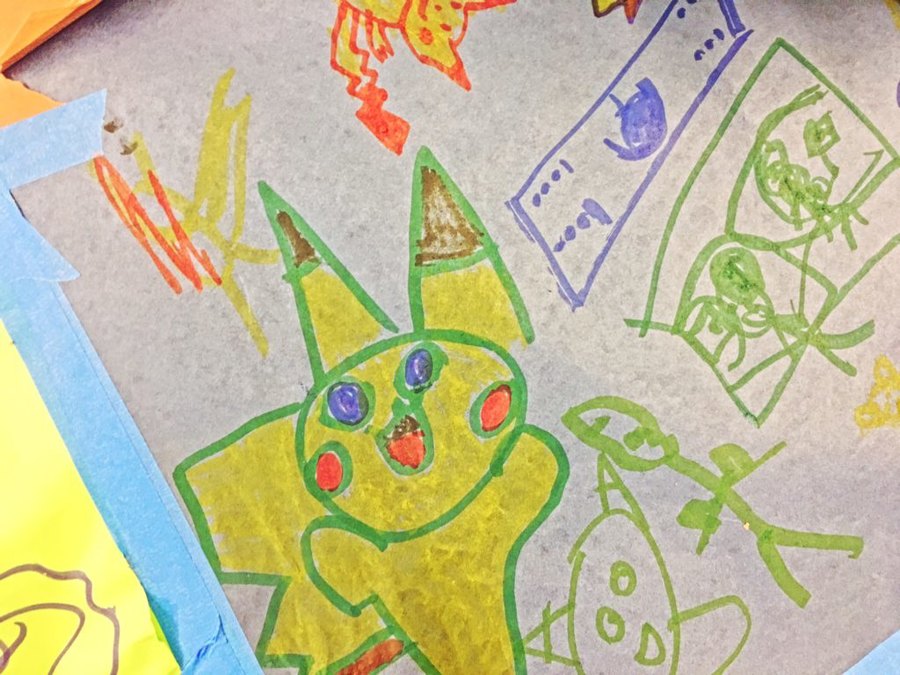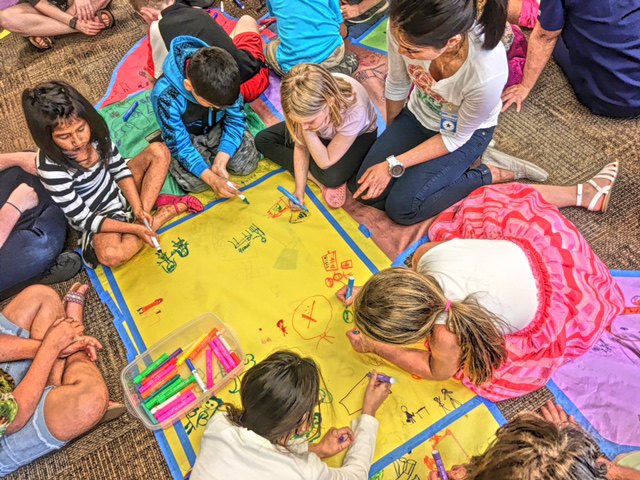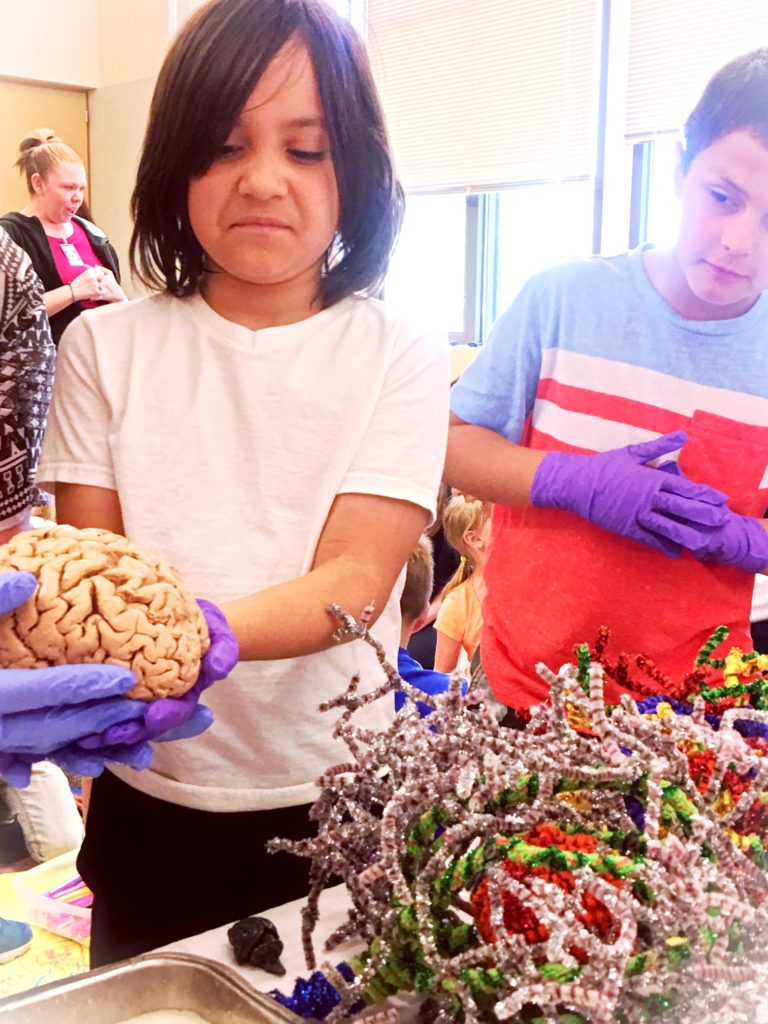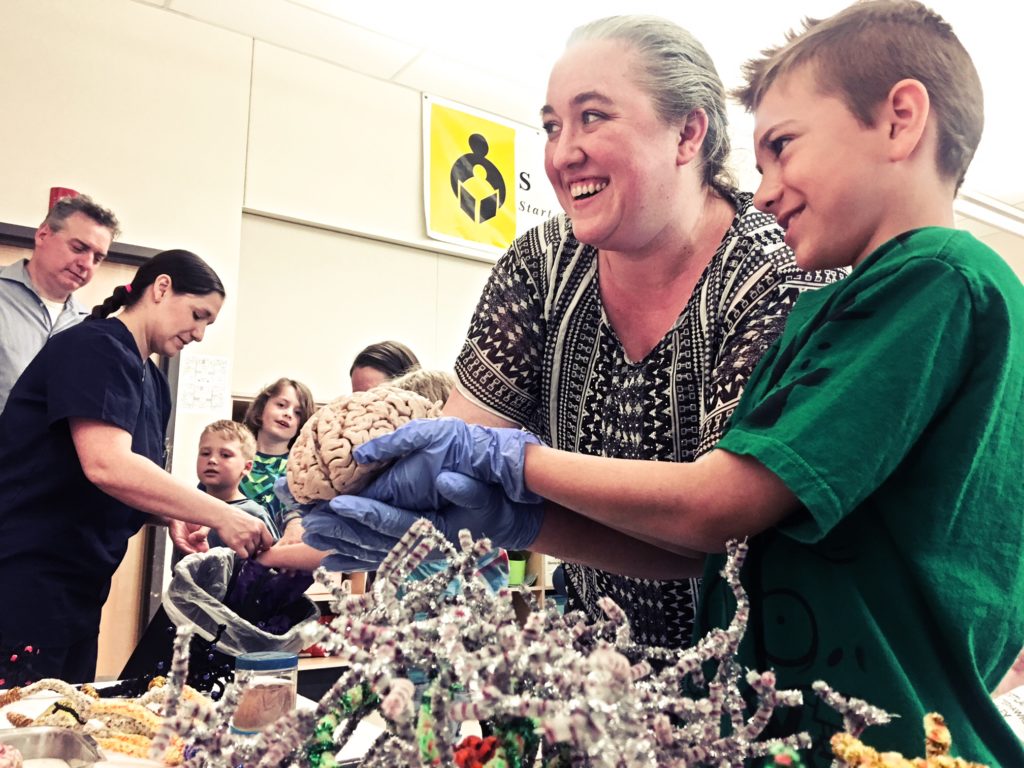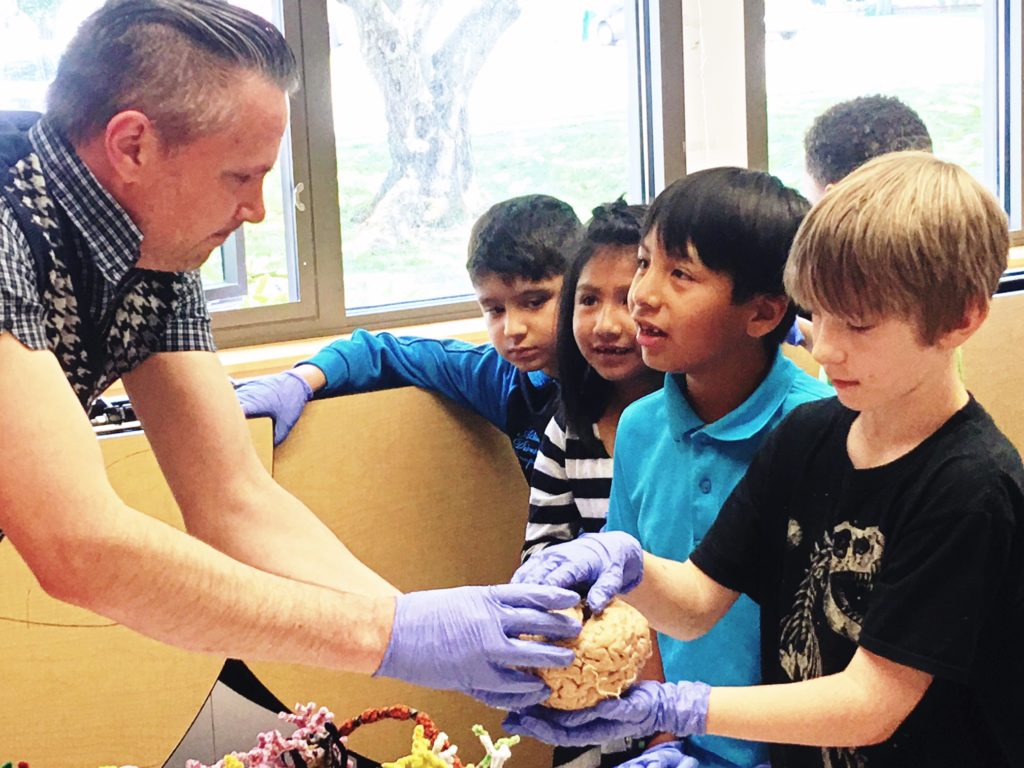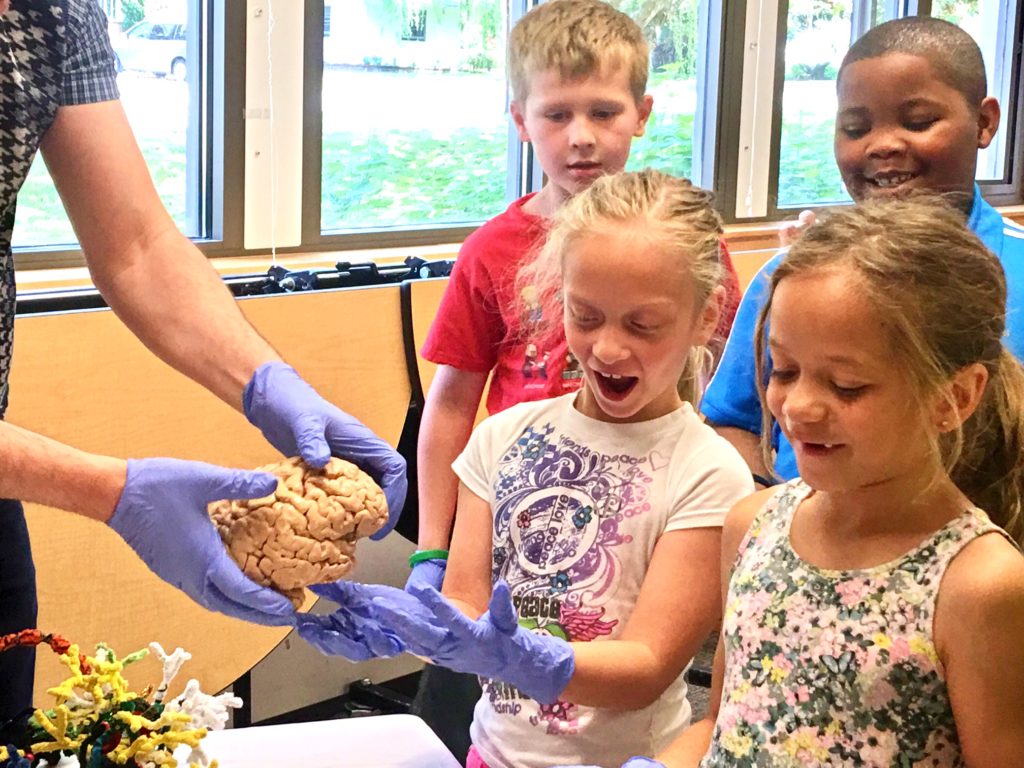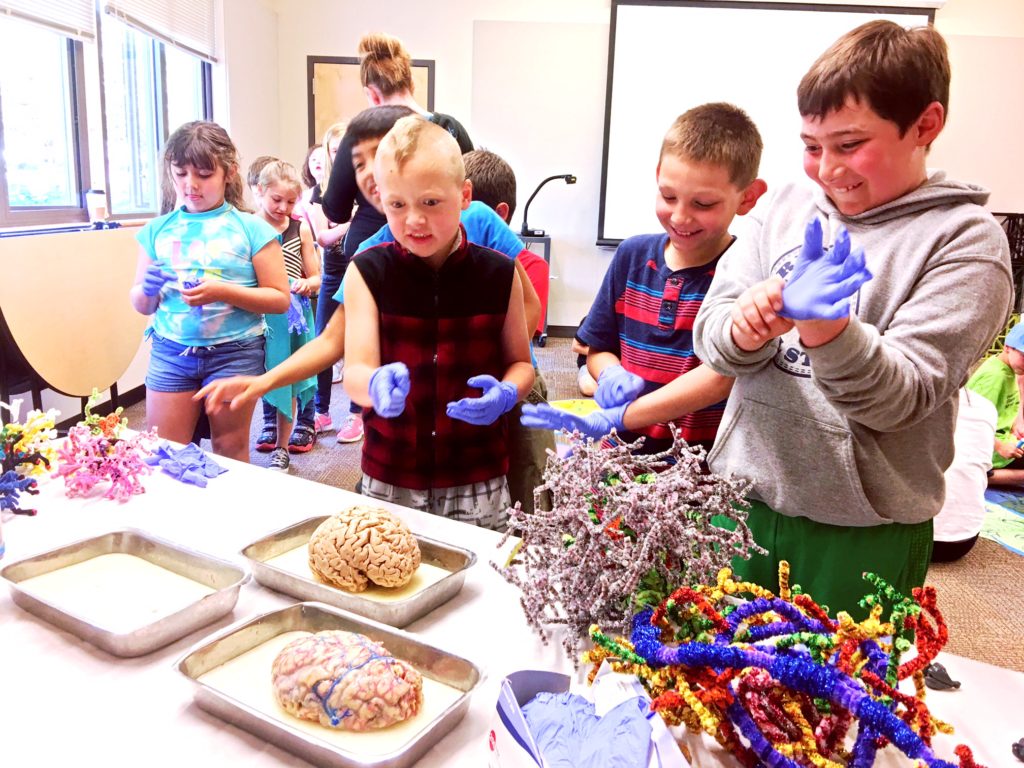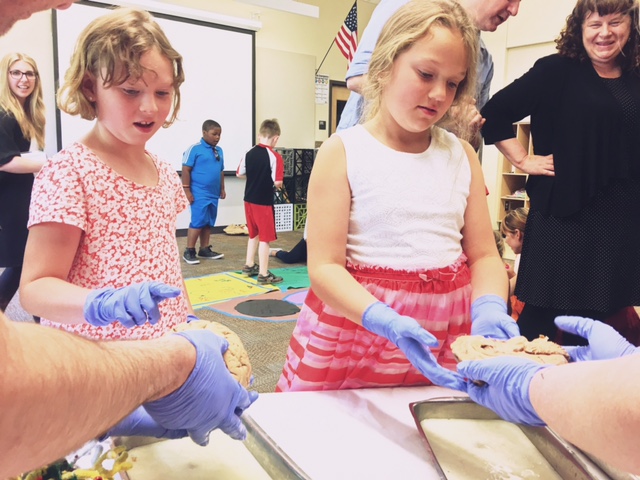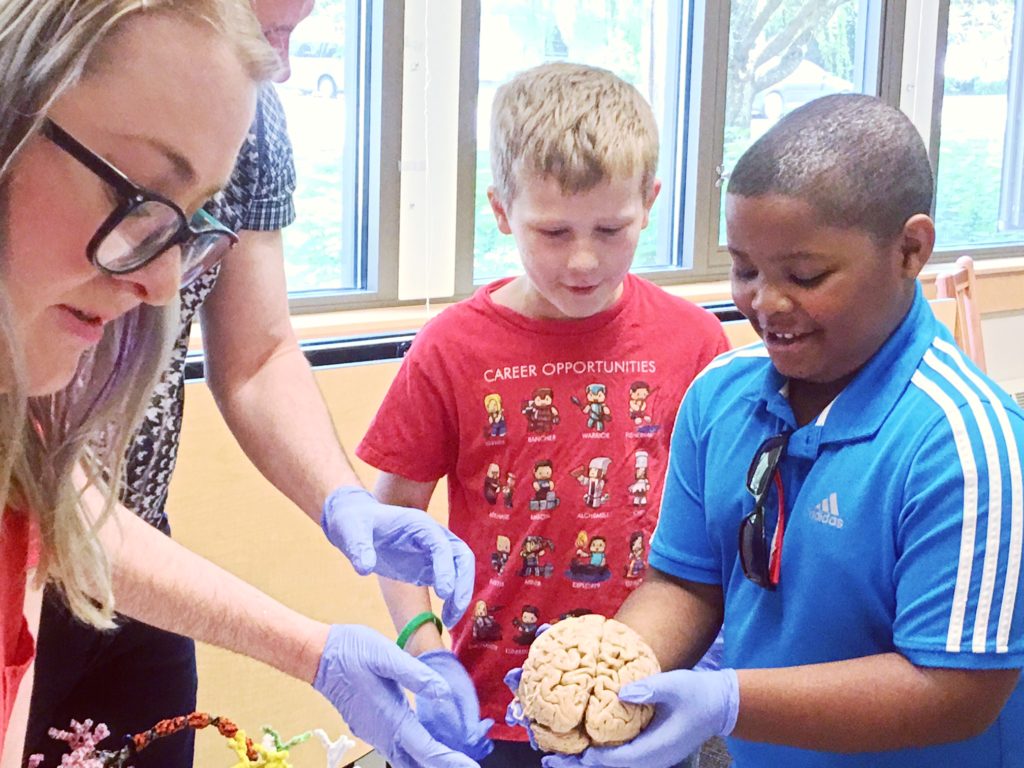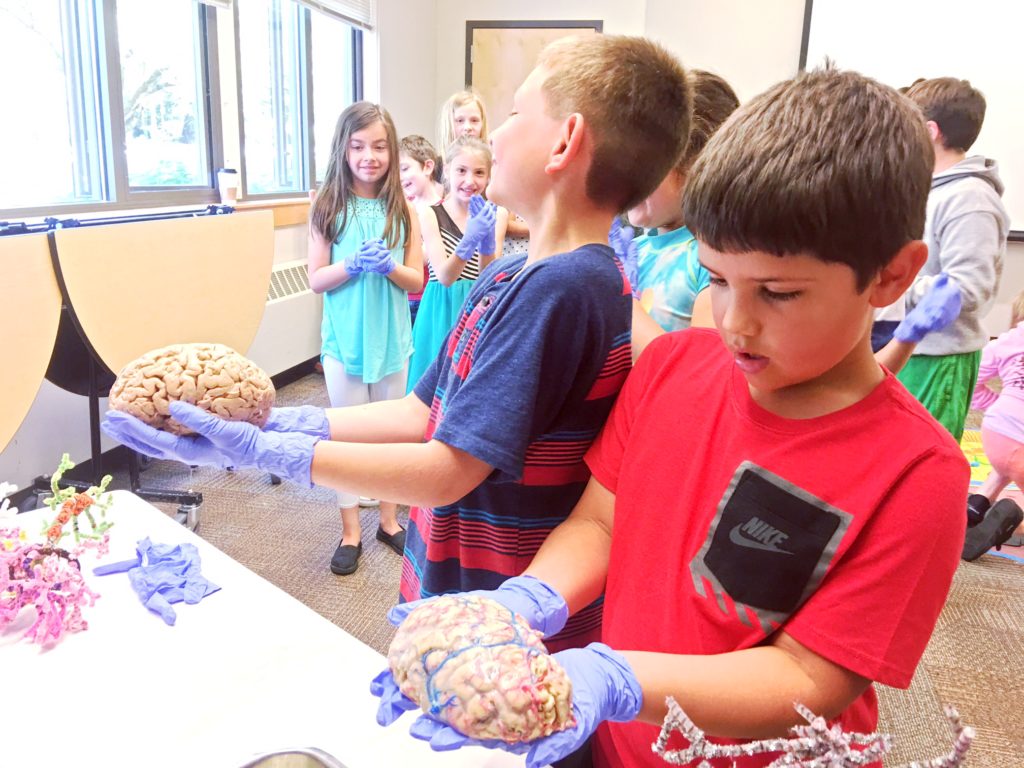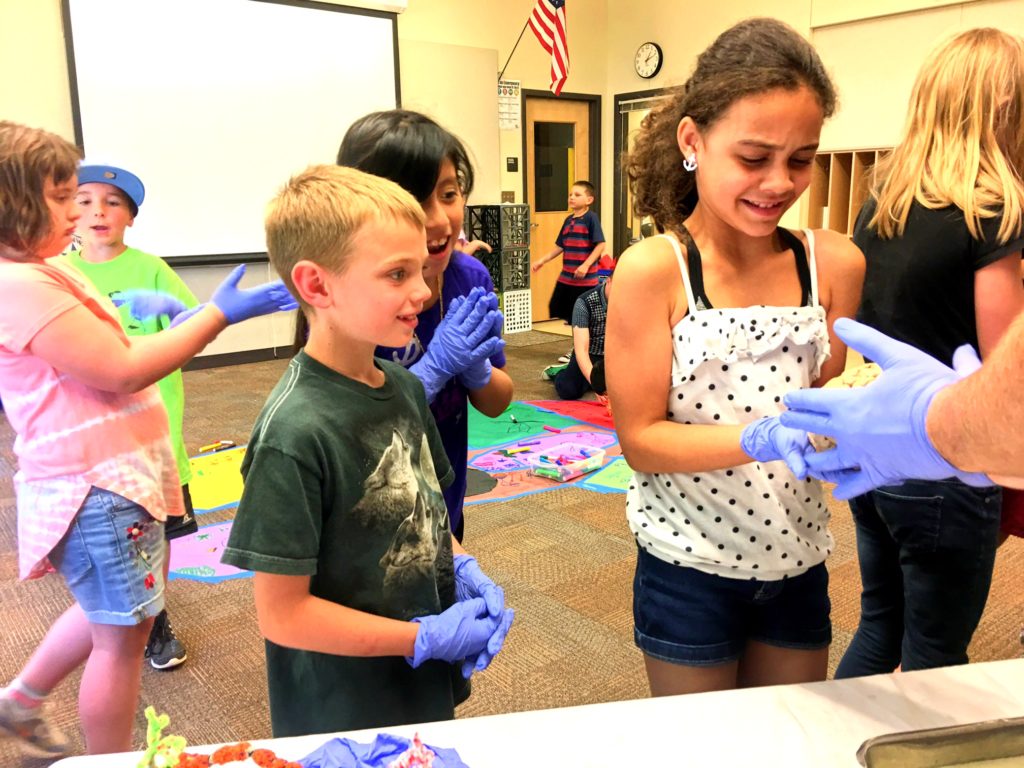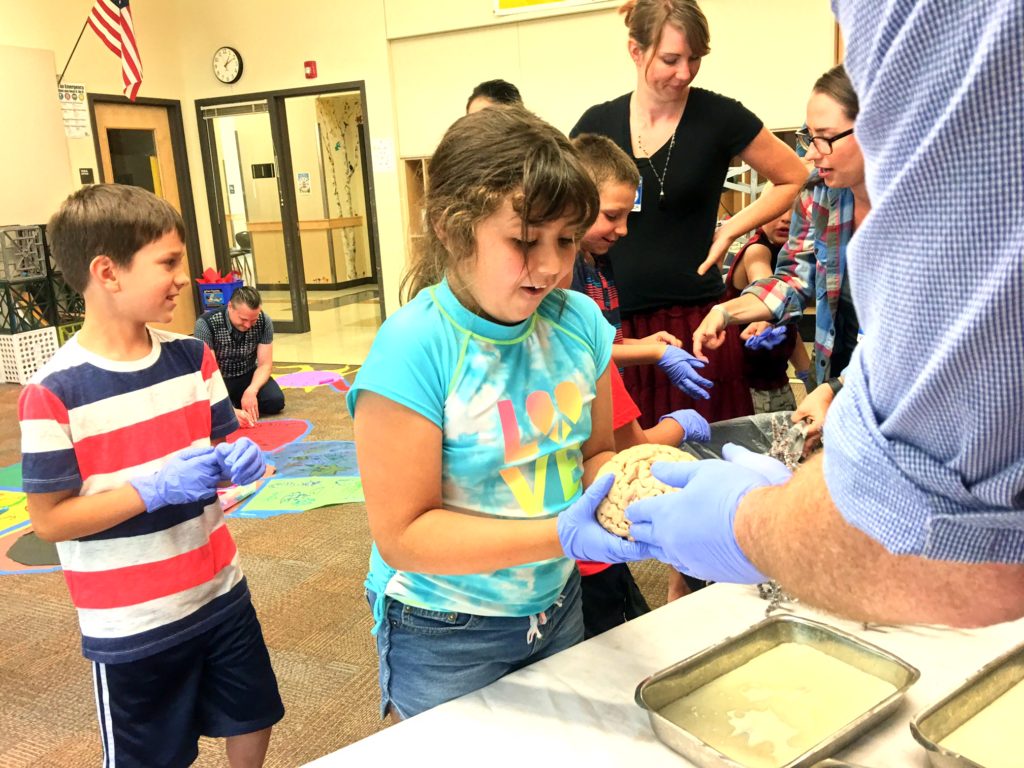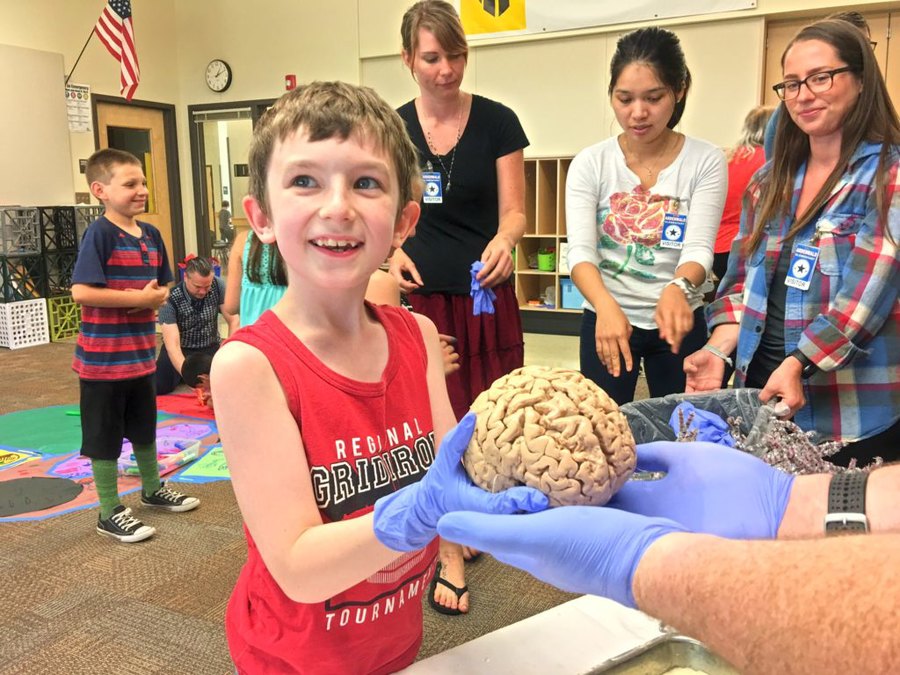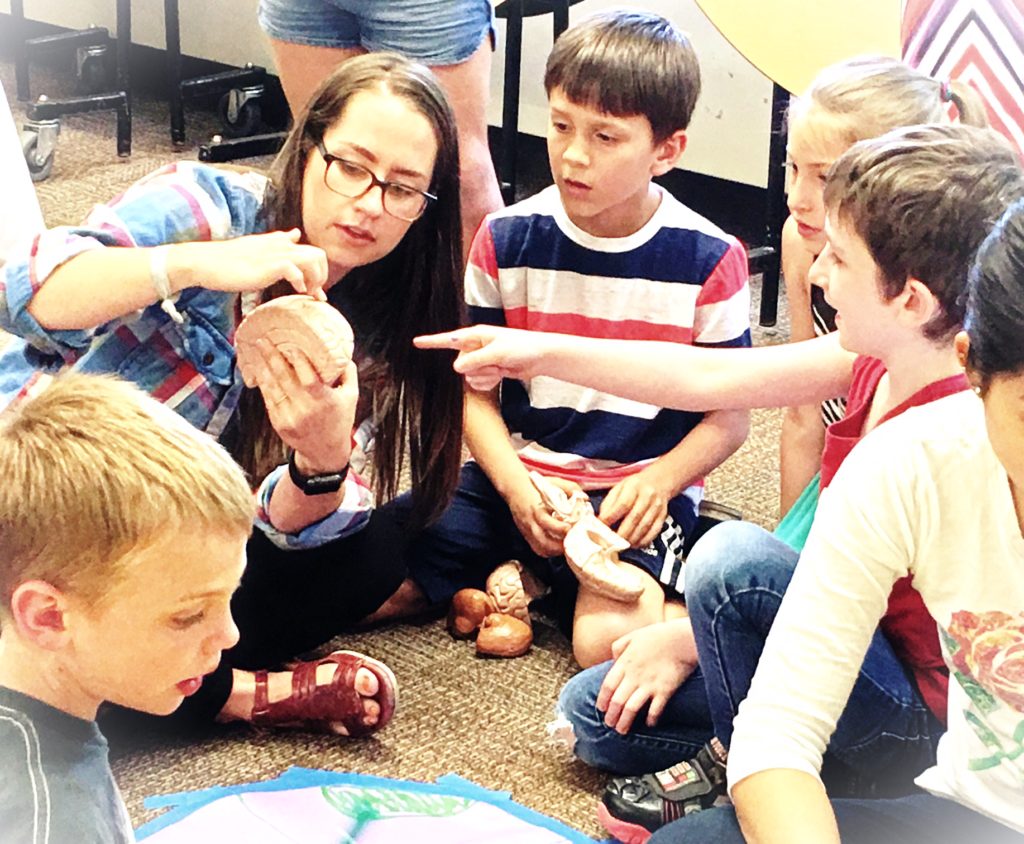The roses (and dendrites!) were blooming this week in Milwaukie, Oregon, south of Portland but synapsed to the city by the orange line MAX…
We arrived at Ardenwald Elementary in North Clackamas Public Schools, signed in and began taping a vibrant brain map to the carpeted floor of Sarah Power’s second grade classroom…
We’d gathered another sizable crowd of Noggin volunteers, including Gil Brady, a graduate student in Psychology at Portland State University, Gaile Parker, Uyen Nguyen, Travis Christian, Shawna Erickson, Ali Mack, Andrea Anaya, and Jennifer Jensen, all undergraduates at PSU, Kim Engeln from OHSU, Holly D’Andrea from the local branch campus of WSU, and Jannea Mantz from Providence Hospital in Vancouver…
Gil, who pursues research on work-family reintegration for returning veterans, asked the second graders if they knew what a veteran was.
“My mom works with dogs and parrots,” said one student. “Ah, a veterinarian,” we explained, adding that some vets certainly do work as veterinarians. “My dad doesn’t eat any meat,” said another student. “And some veterans are vegetarian as well,” we acknowledged…
“My mom made bombs for the Navy,” offered another. “Now your mom,” said Gil, “is a veteran!”
Gil talked about how some veterans have difficulty returning home to their families and work, because of challenging experiences they had in the military. Sometimes they feel frightened, or anxious, or are compelled to remember moments they would like to forget. These veterans might be diagnosed with a condition called post traumatic stress disorder (or PTSD).
The students at Ardenwald had already studied the MindUp curriculum, which introduces students in K-8 to a few select regions of their developing brains that contribute to how we perceive, feel and behave…
The MindUp lessons for early grades focus on three specific regions as “helpers” in the brain, including the pre-frontal cortex which “helps (you) make smart choices.” Another area (the amygdala) “helps protect (you) from danger,” while the third (your hippocampus) “saves memories and ABCs…”
LEARN MORE: MindUp
Very quickly these sharp students were asking us about the amygdala, and whether veterans still felt in danger because it was “too strong!”
LEARN MORE: Amygdala, medial prefrontal cortex, and hippocampal function in PTSD
LEARN MORE: PTSD: the neurobiological impact of psychological trauma
Our Noggin volunteers then took the lead in describing the hippocampus, amygdala, and pre-frontal cortex, all prominently visible on our colorful brain map, as well as additional brain areas, including parietal, temporal and occipital lobes, the cerebellum, and the brainstem…
Students get structure/function relationships intuitively, and knowing what is linked to what leads to great questions, even from very young kids. Since my occipital lobes gets information from my eyes, asked one student, “would hurting my occipital lobe make me blind?”
From first time PSU Psychology volunteer Uyen Nguyen: “The children now know a lot more than I did when I was their age! During the first group, the boy with a question about damage to the occipital lobe completely took me by surprise – it’s amazing how much these kids actually understand about the materials that we presented to them.”
We then introduced our brain map project, asking students to think about what each area did, and how they might explain its function to others through pictures – drawn directly on the brain!
These kids were pretty excited to dive right in!
The brown region was our temporal lobe, which is critical for recognizing objects including faces and chairs. The purple was our hippocampus, found in the middle of the brain in what’s known as the medial temporal lobe (the deeper, inner portion of that lobe, though we taped it on top so our students could draw their memories)…
The black area just in front of the purple hippocampus, also in our brown temporal lobe, represented the sub-cortical (below the outer cortex, or “bark” of this lobe) structure known as the amygdala, where students drew their fears. This was a particularly evocative depiction of falling…
The yellow frontal lobes were full of decisions, as this lobe is critical for successfully navigating complex social environments and, by networking with the hippocampus, engaging memories to help guide our more considered interpretations of amygdala responses (like faster heart beats, increased blood pressure) – sometimes inhibiting them when they aren’t really required…
And the cerebellum, so important for balance, and movement, became home to multiple Pikachu’s, “because Pikachu has to balance on Ash’s shoulders,” and is a very agile, mobile and speedy Pokémon character..!
Our volunteers loved the compelling questions and stories from Ardenwald students. Heather Hamilton, an NIH Build EXITO scholar at PSU, related the following…
“I heard my two favorite quotes while I was sitting with a few kids as they drew on the frontal lobe. The first kid said he didn’t know what to draw, so I asked him to think about a decision that somebody else might make. He said, ‘asking someone that looks alone and lonely if they want to be friends,’ so that is what he drew. A girl had drawn someone helping another person up off the ground while giving them a flower. She said her drawing was, ‘someone helping another person up who was pushed down by bullies and also giving them a flower.’ I loved seeing that these were the first ideas that came to their minds when asked about what the frontal lobe is in charge of!”
Uyen Nguyen notes: “One boy, commenting about the role of his prefrontal cortex in social decision making, said (and drew!) ‘money for me, or money for the poor?’ This had me in awe once again.”
And then, of course, we looked at non-paper brains! Gaile Parker from PSU remembers this quote: “I saw a real brain – and it was GROSS!” (although he said this with a hint of a smile)…
So many terrific questions, and a great deal of brain change underway in Ardenwald Elementary. Thanks to teachers Sarah Powers, Erin Braun and Gail Cope for welcoming us into the classroom!





